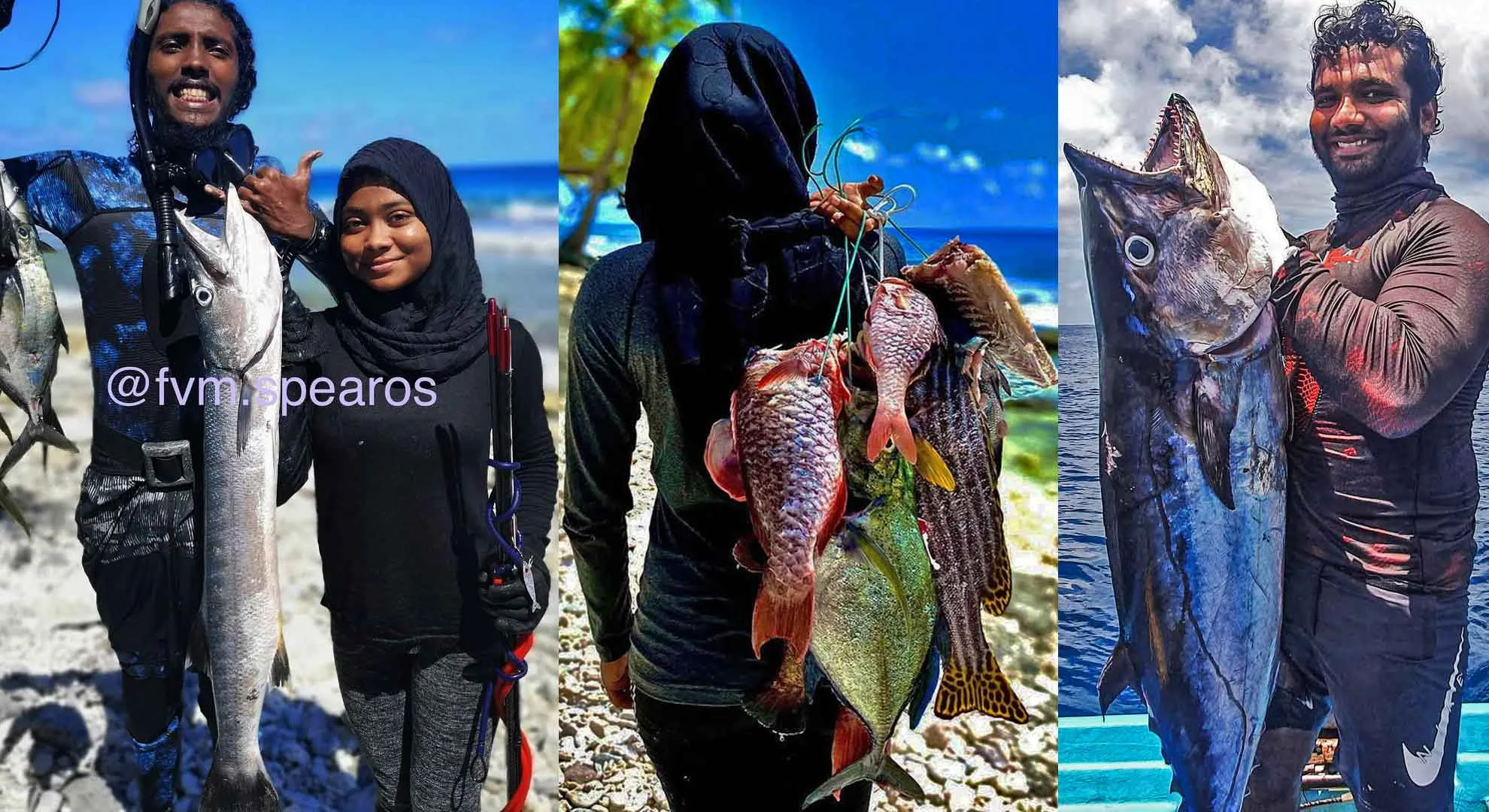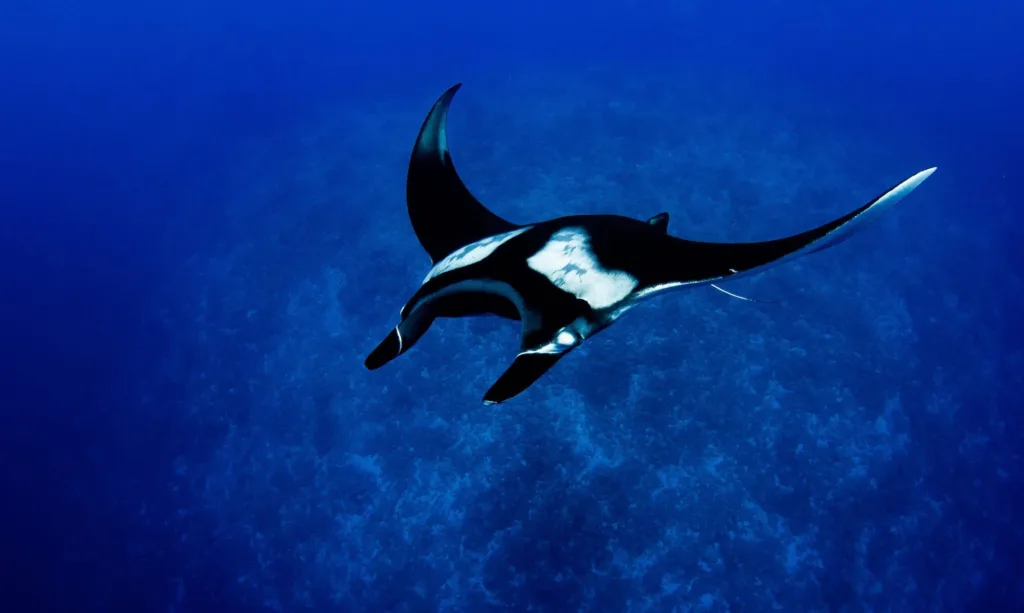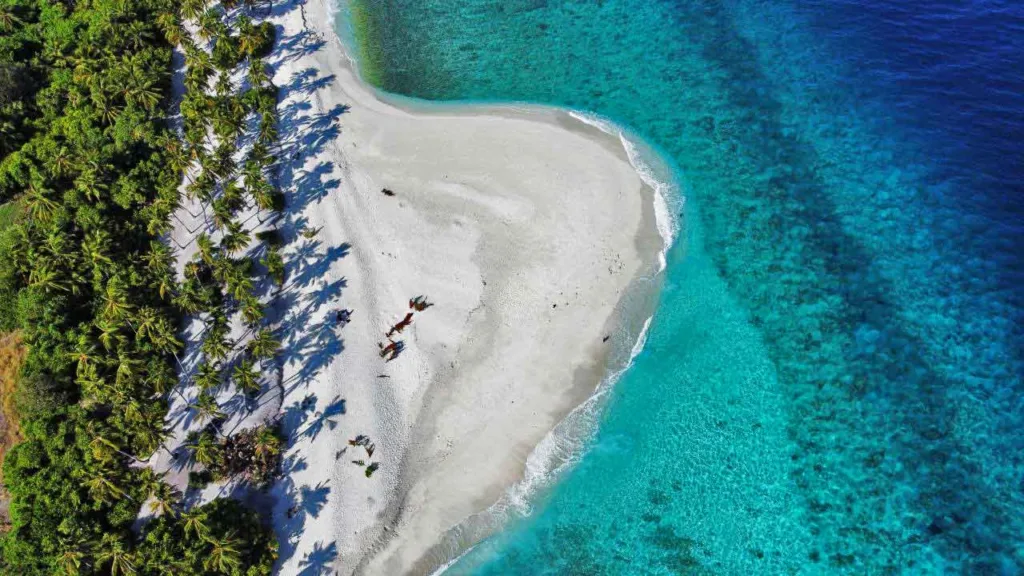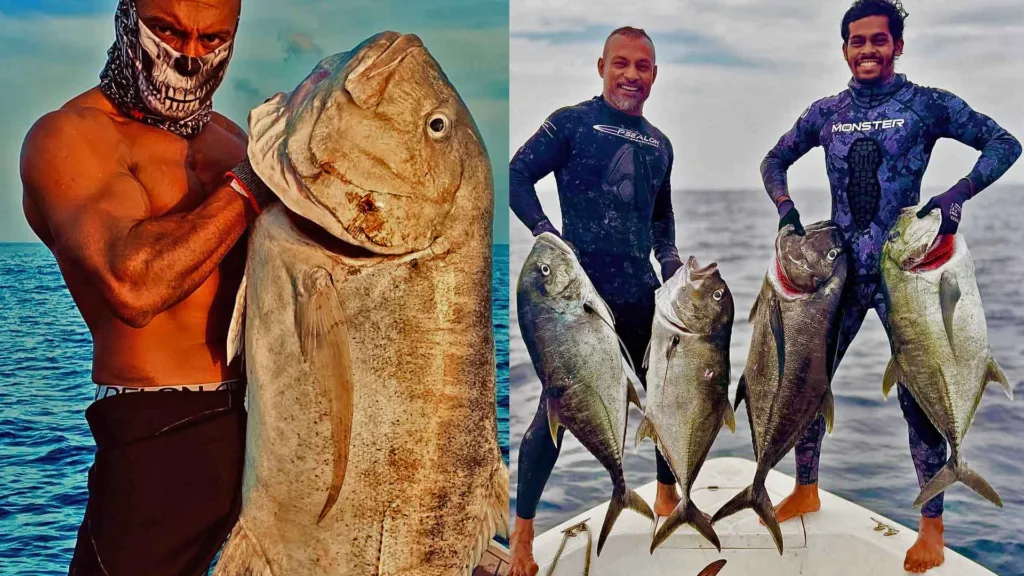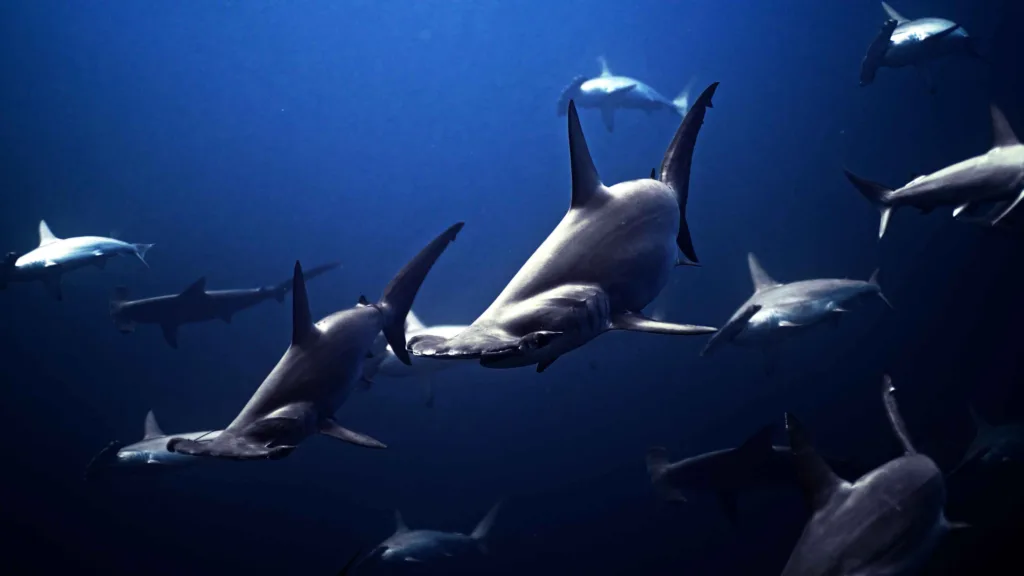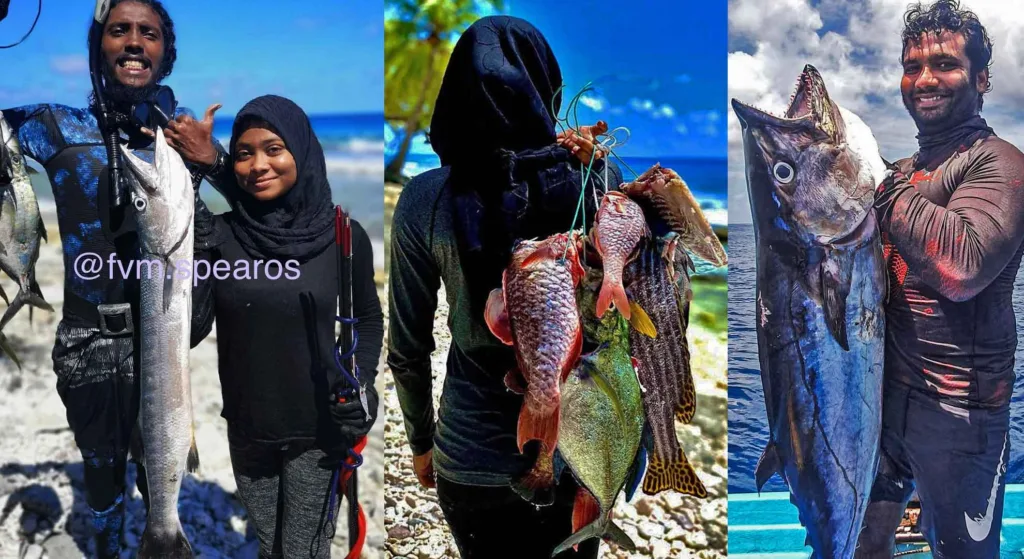
My friends Hussain, Ismail Shafeeu, and Athif and I first went spearfishing in the sea in the early 1990s, looking for octopuses on the reef front of our island Fuvahmaulah’s northwest to northeast side. We used small iron rods measuring three to four feet. We walked along the long reef flat and waited at the edge, where massive waves crashed against it. This section is the area where huge waves smash. Normally, wave movements in Fuvahmulah do not cease. Therefore, we fully prepare, strap fins to our feet, and wear masks to the edge of the reef area. We would hold the iron rod in the hands that were most comfortable for us. Then we’d look for a time when the waves subsided. We leaped into the reef front when the time was right.
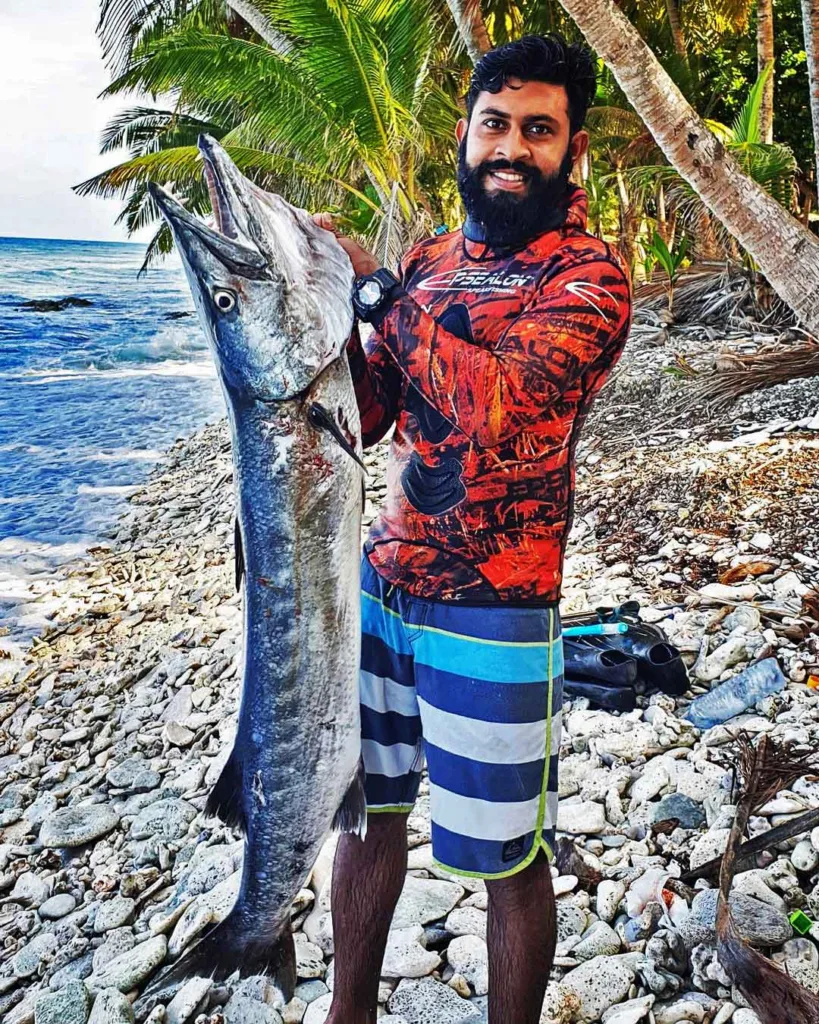
The pounding wave spared those who were fortunate enough to escape. The unlucky would have to endure the pain and force of the crashing wave. If the attempt was unsuccessful, the person would be dragged along the flat reef towards the beach. The individual needed to return to the reef edge and prepare to rejoin us. It was a fight and a brave effort against the strongest forces in nature. It took the unlucky guys between 10 and 20 minutes to join us and dive into the reef front. When we were all able to gather under the water at the reef’s edge, we would begin hunting for octopus.
We also used to go to spearfishing at night near the reef’s edge to catch fish. We made pots from stainless steel bars. The diameter of the net is approximately 18 inches. Normally, the fish stay stationary while we place the net over them. They sometimes swim as we approach. But when we aim the powerful dive light at them, they have no chance of escaping. Some of the fish we caught using this method included squirrelfish, soldierfish, goatfish, groupers, six-finger threadfin, and cardinal fish.
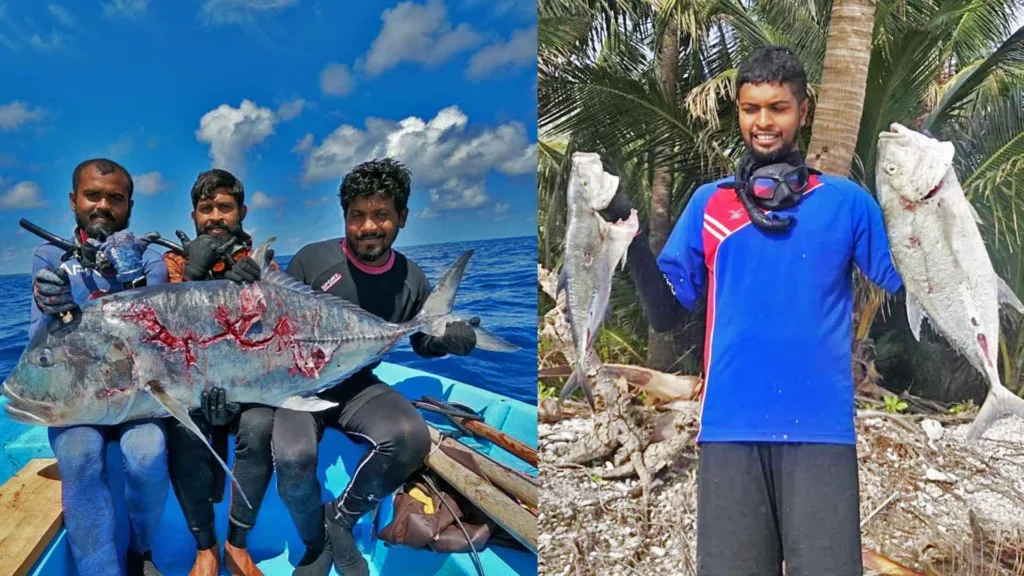
Nowadays, with modern tools and gear, young spear fishermen on our island are skilled at catching fish. Spearos on our islands use spear poles, slings and other modern gear to shoot and impale the ocean’s most formidable predators, such as giant trevallies, dogtooth tuna, yellowfin tuna, and large barracudas.
The topography around our island is entirely different from that of other islands in the Maldives. Due to the constant movement of the waves, getting to the reef front or the open sea is also dangerous. Swimming through the passageways made on the reef flat is also a difficult and risky task. In some places, there are narrow reef grooves, edges, and caves where waves crash and water rises from beneath these mysterious structures. These are the places and areas where spearfishermen can only swim, walk, or stalk to reach the reef front or open water.
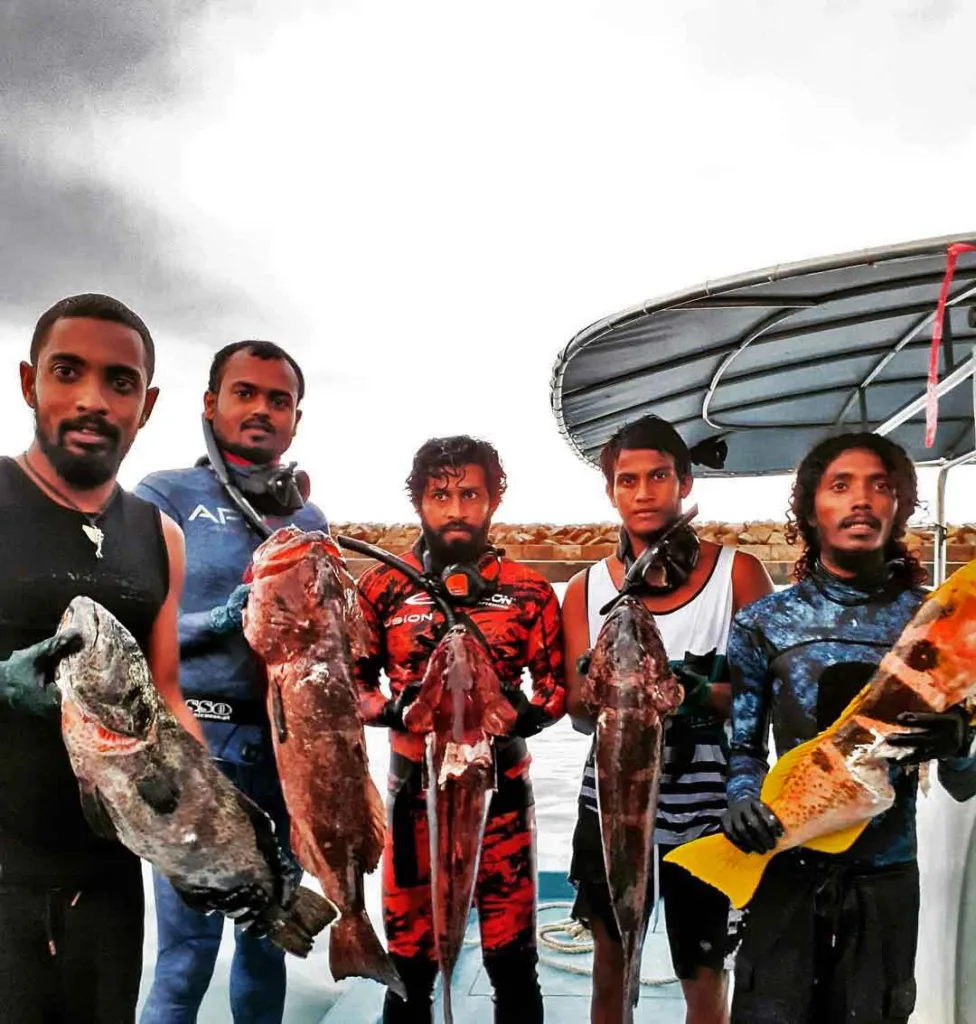
Beginning with the fore reef, the bottom of this area gradually slopes down into the deep ocean. It is relatively deep, and after 30 to 100 feet, there is a dramatic drop-off that descends 500 meters and beyond. It is dangerous to impale your iron rod, sling, or other gear on a predator in this area. You must overwhelm the predator before it escapes or pull yourself back from this steep drop-off. But the skilled spearos engage in this realistic endeavour.
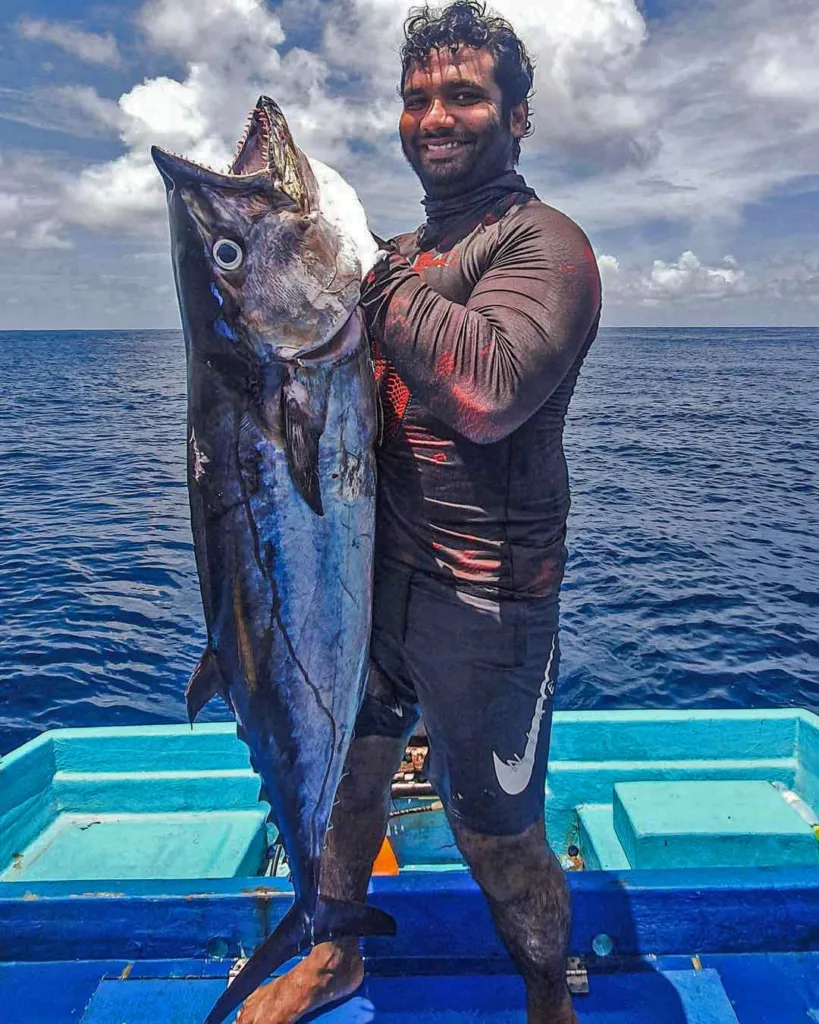
Not only are the waves and deep waters all around the island dangerous, but so are sharks and barracudas. When the iron rod impales a fish, these stealthy predators detect the blood and approach the spearos. However, these warriors who dive into the sea are fearless and brave. Some female spearos also stalk and impale the iron rod precisely on predators under Fuvahmulah’s roaring waves, demonstrating this. It is extremely dangerous to hunt large predators such as dogtooth and giant trevally in the waters surrounding the island.
These dangerous missions typically involve spearfishing in high-visibility areas around the island. Given the incredibly challenging conditions surrounding the island, the spearos overwhelm some of the sea’s most formidable predators, such as giant trevally, dogtooth, barracuda, yellowfin tuna, and large snappers. Spearfishing is a traditional way of catching fish that has grown into a popular sport. It has gained popularity on Fuvahmulah and the other Maldivian islands.
